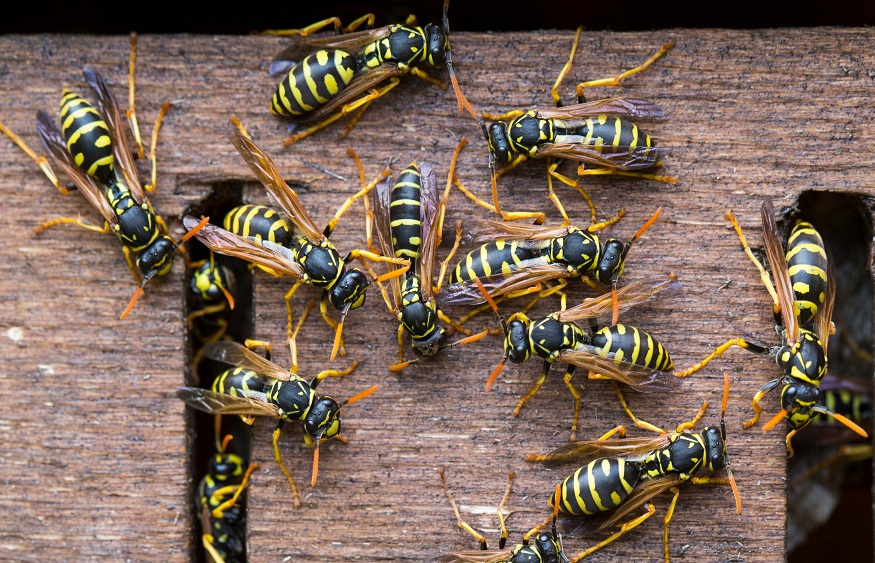Are pesky mosquitoes ruining your outdoor activities? Don’t worry; we’ve got you covered! In this blog post, we’ll explore natural and chemical-free solutions for effective mosquito control. Say goodbye to those itchy bites, and hello to a peaceful summer season. Whether you’re hosting a backyard barbecue or simply enjoying a serene evening on your porch, these techniques will help keep those buzzing nuisances at bay. So, grab a cup of tea and let’s dive into the world of mosquito control!
Monitoring Mosquito Populations
One of the key aspects of mosquito control is monitoring their populations. By keeping tabs on these tiny pests, we can better understand their behaviour and implement effective control measures. Monitoring can be done through various methods, such as trapping and surveillance.
Trapping involves setting up devices that attract mosquitoes, allowing us to collect data on their numbers and species composition. This information helps us determine the areas with higher mosquito activity and plan targeted interventions accordingly. Surveillance involves regular inspections of potential breeding sites like stagnant water sources or dense vegetation where mosquitoes are likely to lay eggs.
Natural and Chemical-Free Solutions for Mosquito Control
Source Reduction
Mosquitoes can be a nuisance, but instead of relying solely on chemical methods to control their population, there are natural and chemical-free solutions that can effectively reduce their numbers. One such method is source reduction.
Source reduction involves eliminating or modifying mosquito breeding sites to prevent the larvae from developing into adults. This can be done by removing standing water in containers, clearing gutters and drains of debris, and maintaining proper landscaping practices to minimize puddles or areas where water can collect. By addressing these potential breeding grounds, we can disrupt the mosquito life cycle and significantly reduce their population.
Nuclear Sterile Insect Technique
The Nuclear Sterile Insect Technique (SIT) is a cutting-edge solution for mosquito control that harnesses the power of science to tackle these pesky insects. Here’s how it works:
First, male mosquitoes are reared in a controlled environment and exposed to low levels of radiation, rendering them sterile. These sterilized males are then released into the wild. When they mate with female mosquitoes, no offspring are produced, effectively reducing the population over time.
This technique has been proven effective in various parts of the world and offers a promising alternative to chemical-based mosquito control methods. By harnessing the power of nature and scientific innovation, we can take significant steps towards creating safer and more sustainable mosquito control solutions!
Biocontrol
Looking for a natural and chemical-free solution to control mosquitoes? Biocontrol might just be the answer you’re looking for! Biocontrol involves using natural predators or parasites to target and reduce mosquito populations.
One effective method of biocontrol is introducing mosquito larvae-eating fish into bodies of water. Fish such as Gambusia affinis, commonly known as mosquitofish, feed on mosquito larvae and can help keep their numbers in check. Another approach is the use of bacteria called Bacillus thuringiensis israelensis (Bti), which produces toxins that specifically target mosquito larvae without harming other organisms.
Oil Drip
One natural and chemical-free solution for mosquito control is the use of oil drips. This method involves placing a layer of vegetable oil or mineral oil on top of stagnant water where mosquitoes lay their eggs. The thin film of oil suffocates the mosquito larvae, preventing them from reaching the surface to breathe.
Oil drips are an effective way to disrupt the mosquito life cycle without harming beneficial insects or other wildlife. They provide a physical barrier that prevents larvae from developing into adult mosquitoes. By using this simple technique, you can reduce the number of mosquitoes in your environment and minimize their impact on your outdoor activities. So, next time you notice standing water in your yard or garden, try implementing an oil drip as part of your natural mosquito control strategy!
Larviciding
Larviciding is a highly effective method of mosquito control that targets the larvae stages of these pesky insects. By treating stagnant water sources with larvicides, we can prevent mosquitoes from hatching and developing into adults. This proactive approach helps to reduce their population and minimize the risk of diseases they carry.
Larviciding involves applying chemical or biological agents directly to breeding sites such as ponds, ditches, or containers that hold water. These larvicides specifically target mosquito larvae, disrupting their growth and development. By interrupting their life cycle at this early stage, we can significantly reduce the number of adult mosquitoes in the area. Larviciding is not only environmentally friendly but also a cost-effective solution for long-term mosquito control efforts.
Adulticide
Adulticide is one of the methods used for mosquito control. This technique involves spraying insecticides to target adult mosquitoes and reduce their population. It can be done through truck-mounted sprayers or handheld foggers, covering large areas quickly.
The insecticides used in adulticide are designed to kill mosquitoes on contact and provide immediate relief from these pesky insects. However, it’s important to note that while adulticide can be effective in reducing the number of adult mosquitoes temporarily, it does not address the root cause of the problem. To achieve long-term mosquito control, other methods, such as source reduction and larvicide, should also be implemented alongside adulticide.
Mosquito Traps
Another effective method for mosquito control is the use of mosquito traps. These traps work by attracting mosquitoes with a combination of light, heat, carbon dioxide, and sometimes even specific scents that mimic human body odours. Once lured into the trap, the mosquitoes are either captured or killed.
There are various types of mosquito traps available on the market today. Some use fan-based technology to suck in and trap mosquitoes, while others rely on sticky surfaces or electric grids to eliminate them. Many traps also come with options for adding attractants such as octanol or lactic acid to increase their effectiveness.
One popular type of mosquito trap is the propane-powered CO2 trap. This device releases carbon dioxide to simulate human breath and lure mosquitoes towards it. Once nearby, they get sucked into a net, where they dehydrate and eventually die.
Other types include UV light traps that emit ultraviolet rays to attract insects like moths and flies but can also capture some species of mosquitoes in the process.
While mosquito traps can be an effective way to control populations around your home or yard, it’s important to note that they may not completely eradicate all mosquitoes in your area. However, when combined with other natural methods mentioned earlier, such as source reduction and larviciding, using mosquito traps can significantly reduce their numbers and minimize the risk of diseases transmitted by these pesky insects.


